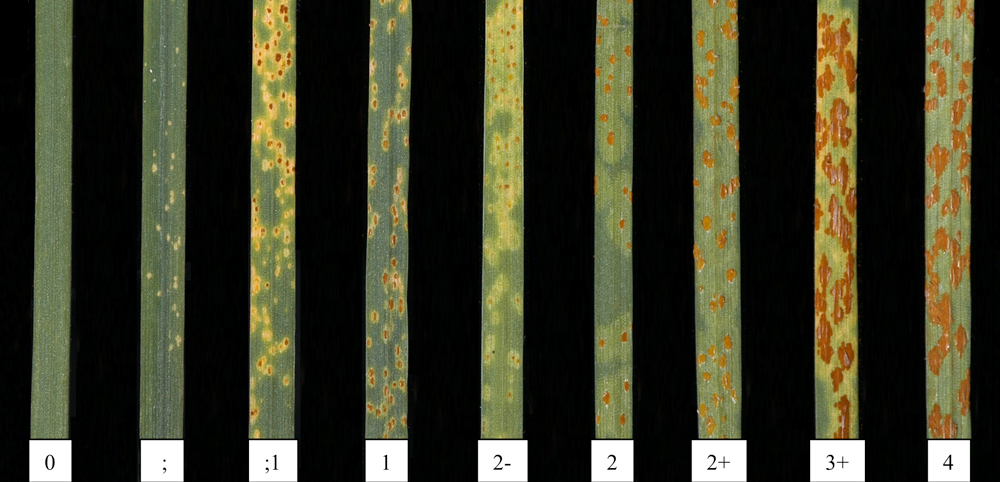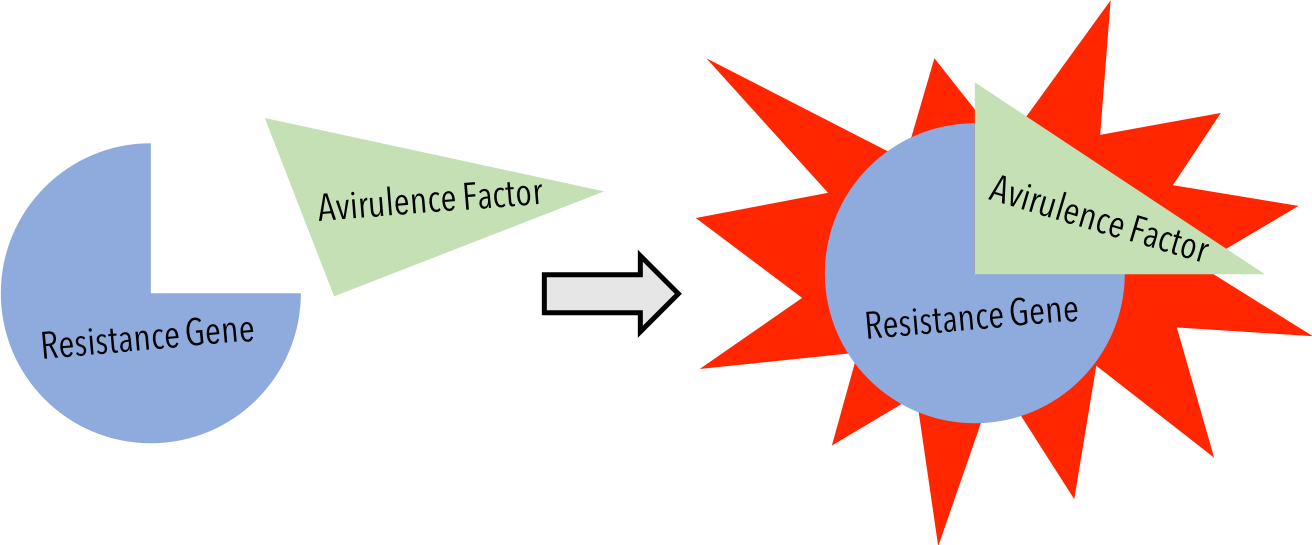

For the past two decades, wheat stem rust fungus caused by Puccinia graminis f. sp. tritici (Pgt) has spread across the world, severely damaging the world’s food supply. When infected by Pgt, crops take 7 to 15 days to show symptoms, delaying the application of fungicides. (https://www.apsnet.org/edcenter/intropp/lessons/fungi/Basidiomycetes/Pages/StemRust.aspx) By designing an early detection mechanism to alert farmers of the presence of Pgt in their fields, they will be able to apply fungicide and treat their crops sooner. In addition, damage from the fungus is more severe when infection occurs early in plant development, making early detection crucial in crop efficacy. (https://www.ars.usda.gov/midwest-area/stpaul/cereal-disease-lab/docs/cereal-rusts/wheat-stem-rust/) The advancements made by our project will allow for higher crop yields.
Resistance genes are naturally occurring in wheat and are specific to different races of Pgt. The proteins encoded for by the genes recognize effectors, called avirulence factors, secreted by the fungus and trigger an immune response in the plant, preventing infection. If the crop does not contain a resistance gene specific to the infecting race of Pgt, the fungus is said to be virulent. (Identification of wheat gene Sr35)
In order to test for the presence of Pgt spores, we propose a two step mechanism: detecting and profiling.
The detection aspect of our project will produce a signal alerting farmers of the presence of Pgt spores, regardless of virulence. When the germinate, Pgt spores form infectious structures that contain branching filaments called hyphae. Ribitol is a byproduct of metabolism that is unique to the hyphae of Pgt. (http://mic.microbiologyresearch.org/content/journal/micro/10.1099/00221287-97-1-83;jsessionid=Zt-p98IKAXdL_e4fAQ0Ny6Cy.x-sgm-live-03) By transforming E. coli B-12, which does not naturally respond to ribitol, with a plasmid carrying a promoter induced by ribitol directly upstream of a fluorescent protein, we aim to detect the presence ribitol and therefore Pgt. (A non-antibiotic marker for amplification of plant transformation vectors in E. coli)

The profiling component of our project aims to distinguish the virulence of the race of Pgt present. The resistance genes present in the wheat crop can be expressed in Saccharomyces cerevisiae and engineered to produce a signal when they recognize the avirulence factors. We hope to demonstrate this recognition using the Sr35 resistance gene and the AvrSr35 avirulence factor, however it can be applied to various genes specific to the crops. (Variation in the AvrSr35, yeast two hybrid, biomolecular)

Coupling with the two mechanisms together, we are able to discern for both the presence of Pgt as well as if the strain is virulent to the crops. If a signal is produced in the detection step but not profiling, the race of Pgt is virulent.

